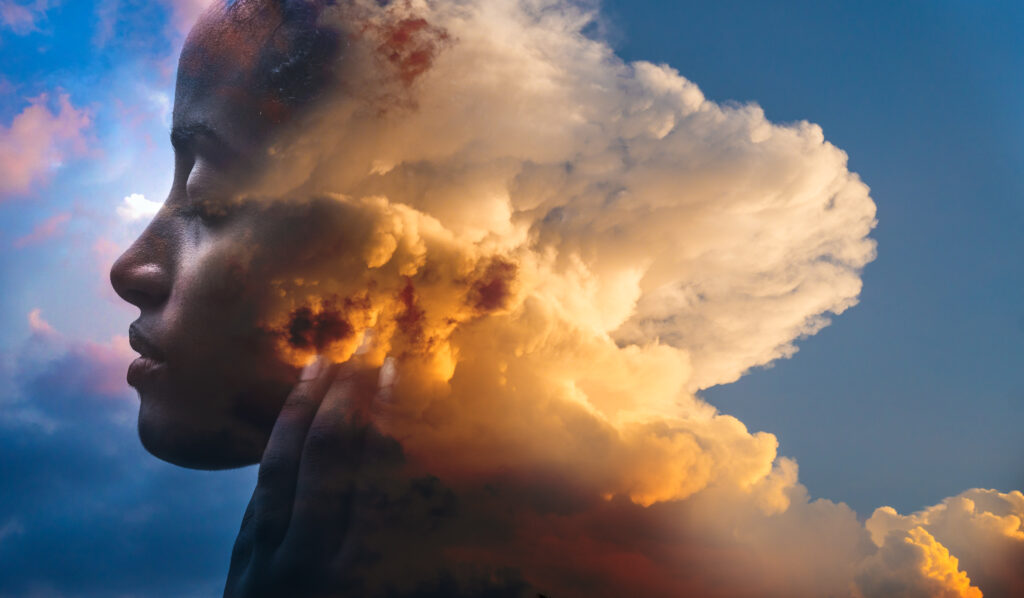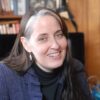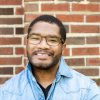Indigenizing What It Means to be Human

Anthropology’s fraught history of relating to Indigenous peoples around the world has caused much harm. Both the field’s theories and individual biases have shaped popular knowledge about these communities and even understandings about what it means to be a human.
White supremacist ideologies, in particular, place people who are not of European descent below White people in faulty, hierarchical evolutionary models to support global colonial domination through enslavement, genocide, land theft, environmental destruction, and cultural appropriation. These racist constructs often erase the depth and breadth of people’s histories and cultures. Moreover, they deny people their humanity.
As a result, some contemporary anthropologists call for “letting anthropology burn.” They urge an unsettling of the discipline through political projects that focus on “repatriation, repair, and abolition” of unjust institutions and their legacies, as Ryan Cecil Jobson writes. These efforts reckon with and help heal this past. Many within the field are doing just that.
Our editorial team felt an urgency to align with this effort by gathering creative pieces that center Indigeneity in stories and poems about being human. We put out a call for submissions in the spring of 2022, and we were thrilled to receive more than 40 submissions.
The 19 poems and stories we’ve curated for publication in this collection, from many continents and languages, speak of a cycle familiar across the globe: continuity tempered by change. Practices, songs, oral histories, and stories are held in place by memory and transformed into poetry, preserving understanding and wisdom about what it means to be human in specific contexts and communities through time.
The poets and storytellers you will meet in coming weeks invite readers to consider ancient truths and how we can accept change as one form of resilience and cultural sustainability. As Tohono O’odham poet and linguist Ofelia Zepeda writes in “Rock Drawings”: “We will remember the songs, prayers, and language we were given. / Over time they too will change.”
In many of the poems, the oldest form of truth is found in stories of long-ago ancestors or more recent parents and grandparents. Nigerian poet-anthropologist Peter-Jazzy Ezeh evokes such ancestors of the Eha-Alumona clan of the Igbo. In “A Tree’s Tongue,” he writes the powerful lines: “Chorus of our forebears / In the ground / Speaking with one voice through the Ogbodu tree … / ‘We sure shall rise again.’”
Hope lives and breathes through ancestral practices, songs, stories, and poems protected and enlivened by those who, across millennia, have brought healing and vitality to their people. In “A Love Letter to the Munay-Ki,” Azuka Nzegwu writes about an ancient body of knowledge gifted to the Q’ero people of the Andes in Peru: “Grandmothers, grandmothers / you speak into our occipital, / whispering healing into our bones / teaching us how to fuse our wishes and desires / to the reality we are creating / and to the being we are becoming.”
But in addition to hope and wisdom, many people have inherited ancestral trauma from colonialism. AJ Kluck, a sqilxʷ poet and artist in Canada, addresses both their grandmother and water in “a love letter to my qáqnaʔ.” The poet asks what has been passed down from generation to generation: Breath? Blood? Shame? Pain? Medicine? Kluck says their practice “is rooted in building slow and gentle relationships with the land and community, and healing intergenerational trauma.”
Also evoking ancestors and water, Abigail Chabitnoy writes in “Born of ‘All That Good’” that elders pray children can survive the real and metaphorical seas of life. She pushes back against the “good” arguments behind colonialism and government-sanctioned, genocidal acts that removed her great-grandfather from the Woody Island Baptist Mission in Alaska, bringing him to the Carlisle Indian School in Pennsylvania.
As a new mother, she reimagines “what qualities will empower [her] daughter to survive—and thrive—against such violent odds.” Chabitnoy wonders how, through her poems, “might I leave a lifeline for my angyaqciq to pick up and shape as she has need? How will I truss her to solid ground even as I send her to chart her own waters?” She brings these questions to bear in two additional poems in the collection: “In the Event of Flooding” and “Post-.”
Most of the poems are written in English, which in some regions is the first language of many Indigenous people today. But many of the featured writers show the importance of preserving Indigenous languages, whether with full translations or by integrating community language terms and worldviews. Some of the poets emphasize the importance of naming things—and who has the power to name—while recognizing the limits of naming. Poetry and storytelling, then, offer ways to both name and not name.
In “Feeling What We Are/A’yel jtaleltik,” Delmar Ulises Méndez-Gómez writes in Tseltal (a Mayan language) and Spanish, with a translation in English by Whitney DeVos. His prose poem presents this unapologetically biased affirmation: “I am not Indigenous, / I am Tseltal / I am the language of my people. / By naming myself, I feel. / I am the language I speak. / By naming myself, I exist. / By speaking my language, my lineages emerge.”
We need to remember the ancestors were scientists and that anthropology can be sacred.
By contrast, Ezeh’s second poem, “T,” affirms a truth by not naming it. In the poem, he highlights that the Orring people in southeastern Nigeria conceive of the origins of the cosmos as a secret held by Ọvọṅ o tiṅẹ lokpata gbẹẹ lose (“the thing that created the sky and the earth”). He writes: “You are she too deep to be named / To name you is to demote you.”
Landscapes—both physical and relational—are also difficult to capture in language for outsiders. Abrona Aden says her poems emerged as she thought about her identity and heritage as a Christian Lepcha and a professor who reads and writes in English at a university in India. In “Mayel Lyang,” a poem about the “mythical nucleus” of her community, she writes, “How can I draw / Maps of the mind / Maps of the heart / Maps of the soul? / To show you / My heartland.”
In another poem, “Looking for the Lepchas,” Aden wrestles with the legacy of anthropological and historical writings that speak “about” her community. She visits a museum and library, trying to find herself in the words and objects that supposedly encapsulate her culture. But she cannot.
Anthropologists of the past often looked for one kind of truth as they studied communities, and they sometimes forgot to read the “writing coded in action,” as Ezeh evokes in “A Tree’s Tongue.” More concerned with how to place a practice or a people on a grid of their own making, outsiders can sometimes miss the meaning in stories or actions.
The “objectivity” of Western sciences such as anthropology often caused dissonance for Indigenous communities whose ethics, intuition, and spirituality were—and are—inseparable from observation and knowledge production. At times, traditional people watched traditional knowledge, misunderstood by outsiders, become a “yoke that bound us to misfortune,” as an older Noni woman from Cameroon voices in “The Path” by Kefen I. Budji.
Such harm is not an isolated experience, notes Quechua poet and linguist Elvia Andía Grageda in “Seeker of Life/Kawsay Thawiq.” Writing about what happened when non-Native paleoarchaeologists and others extracted human remains from her community, she describes the difference between “ancient bones” and “the heart of the earth.” Thomas Pecore Weso also speaks of clashing understandings in his story “A Free Man: The Story of a Menominee Elder.” Through this nuanced narrative, written with a beautiful bias from within the Menominee community, Weso discusses the right to live as someone non-Native anthropologists pejoratively labeled “a pagan.”
Other anthropologist writers in this collection also retell stories from an insider’s perspective. In “A Birth and a Death—a Haunting of Igbo Landing,” Ghanian American poet-anthropologist Hannah Odoom weaves her African diasporic and Indigenous identity into a famous story centered on death and rebirth—the action of resistance and of survivance. She writes, “under turmoil that made way for / me, and 500 years that prayed for me to be in this place, this space as I am.”
Poet-anthropologist Vincen Gregory Yu similarly enlivens a popular myth from the Philippines in “Apparition in Sugarland.” He gives poetic voice to a famous queer Filipino American artist who acts as both witness and critic in returning home in the wake of U.S. colonialism.
These writings show that perhaps the “subjective” truth of elders can exist in tandem with the “objective” nature of anthropology. We need to remember the ancestors were scientists and that anthropology can be sacred.
Considering the chasm of differences to overcome, Natalie Dana Lolar asks, “How Do We Heal?” She suggests collaboration, co-teaching, and interconnected communities are one answer. Speaking as an Indigenous archaeologist, she writes: “We bridge two worlds, collaborating, teaching, and defining community. / We are healing.”
Looking to the seasons as our teachers, Kashmiri poet-anthropologist Toiba Naseema reminds us we know how to let healing happen, to “let the chasm of spring and the chants of water soothe our mind.” For her, memories are a critical element: They are “asset(s) of an occupied territory, an occupied culture, and of occupied identities,” she says. Like the wisdom of the red chinar tree in bloom, these memories “tell us how our cultures with millennia of resilience give us hope to live further and see the brightest of our dreams that belong to us.”
In dreams, Tehreem Anwar finds hope for healing in the unlikeliest of places: asylums in Pakistan where women are unfairly trapped by a patriarchal culture. In reflecting on her short essays in “What It Means to Be Human in an Asylum,” Anwar eloquently notes: “To be human in an asylum is to be in a constant battle between your reality and your lost dreams, but it is also these dreams that give survivors hope that tomorrow will be better.”
It is time for a thaw in the way we understand one another. We invite you to read these poems and stories as seeds of understanding and “hope to live further,” as Naseema envisions. Join us in awaiting and cultivating the season of growth.
The editors offer their heartfelt thanks to each of the writers for their vital contributions to this powerful collection.



































